Have you ever dried a flower yourself? You know, hang it upside down, or leave it in a vase long after its prime and it eventually dries out. Yeah, the shape won’t be retained .. it will likely be wrinkled and wizened. But, try to ignore that for now. Have you noticed what happens to the color of the flower during and after the drying process? Eventually, if not quickly, that flower will turn brown, or significantly darker than its original color.
Even a beautifully, carefully, professionally preserved flower, with time, will either brown, fade and “yellow” or look slightly browned or even turn much darker than it was originally. It’s not a matter of how well that flower was preserved or dehydrated. It doesn’t matter if it is kept away from moisture or UV light. It’s a matter of natural processes. It’s really a matter of chemistry.
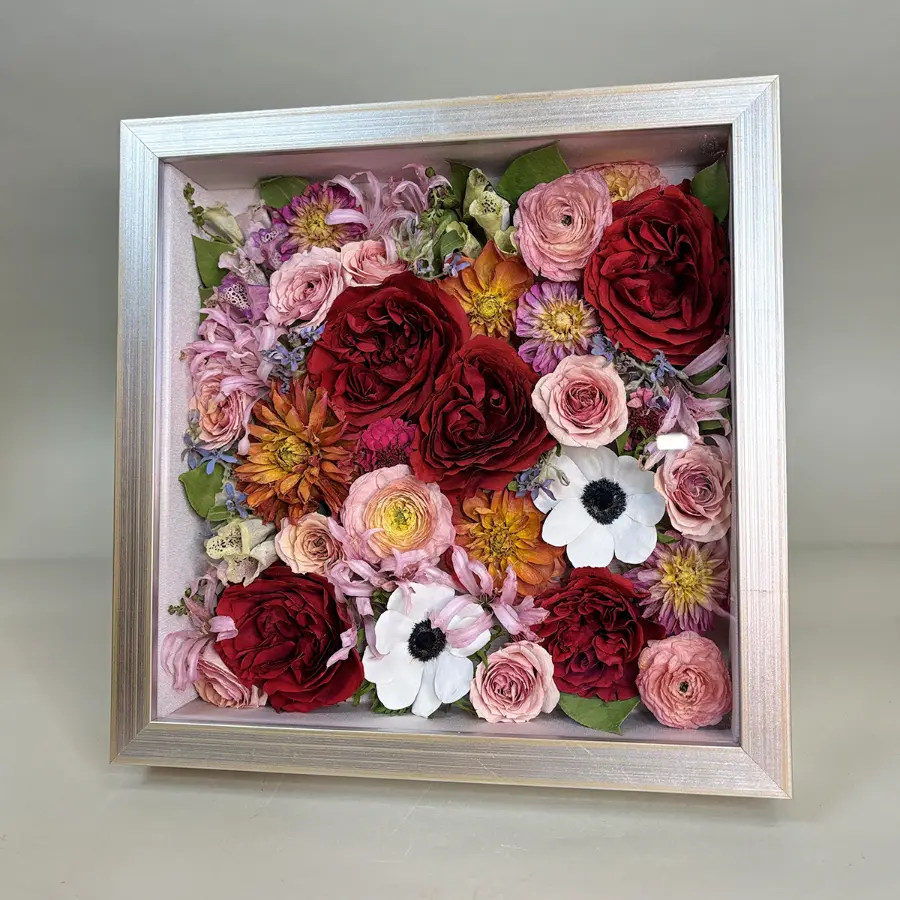
When the moisture is removed from a flower, the structure of the molecules that create the flower’s color, called carotenoids (yes, think beta carotin, the stuff that makes carrots orange) and also molecules called anthocyanins. Things like light, water, temperature, other molecules and pH can all alter the structure of these molecules. It is the alteration of structure that causes the change in color. When the water is removed from the flowers, this structure is altered and it will either quickly, or slowly, change the color of the flower.
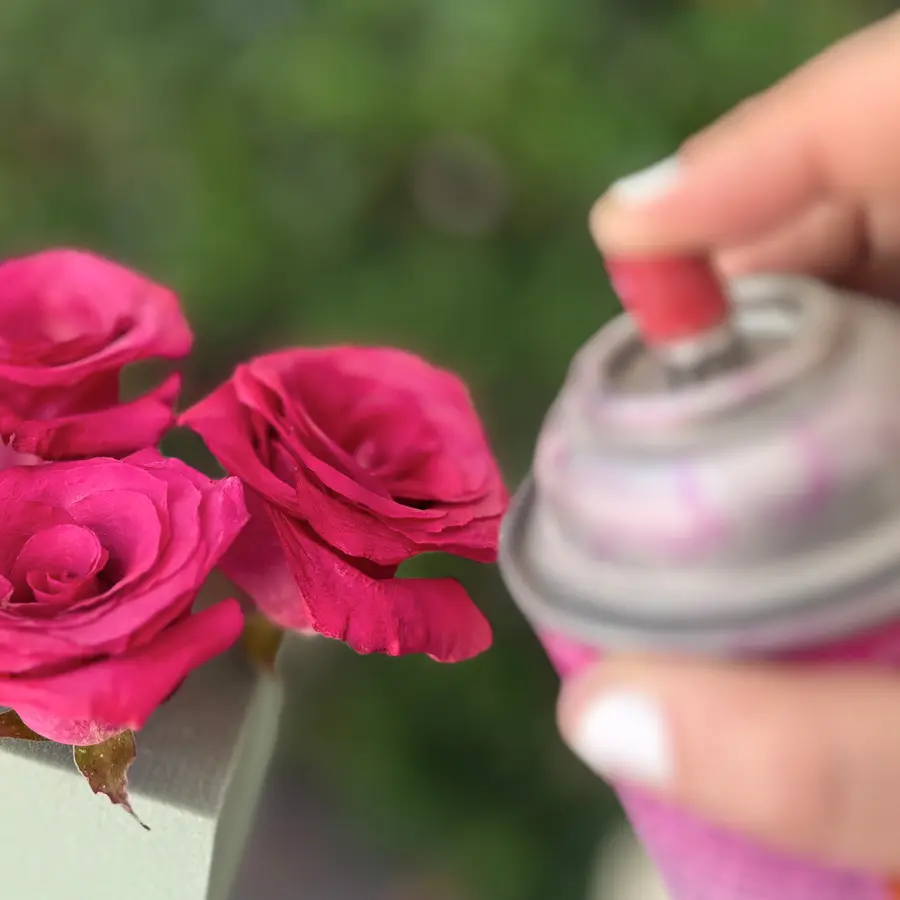
So no matter how well you dehydrate your flowers, they WILL change color .. both during and after the preservation process. The folks at Keepsake have understood this reality for 30 years. And, for those 30 years, painting (or hand-coloring) each flower and leaf is a required part of our preservation process.
We repeat over and over with potential and current clients, that at Keepsake Floral, each and every flower, leaf and petal used within our keepsakes is hand painted. And then we go on to explain why that is important. And if you want the flowers to stay colorful for decades, they MUST be painted! And we do want our clients’ flowers to stay colorful and beautiful for decades.
For our company and for our industry, this is an important step within the floral preservation process. And the science behind this inevitable process is why. Not all preservation companies take this important step, and it shows in the end result. Without this coloring, flowers will remain browned or goldened, or even almost black and void of depth and dimension. For us, that is unacceptable. Keepsake Floral’s painstaking and time consuming painting steps help to counteract this color loss. If done correctly, the hand coloring is hardly noticeable.
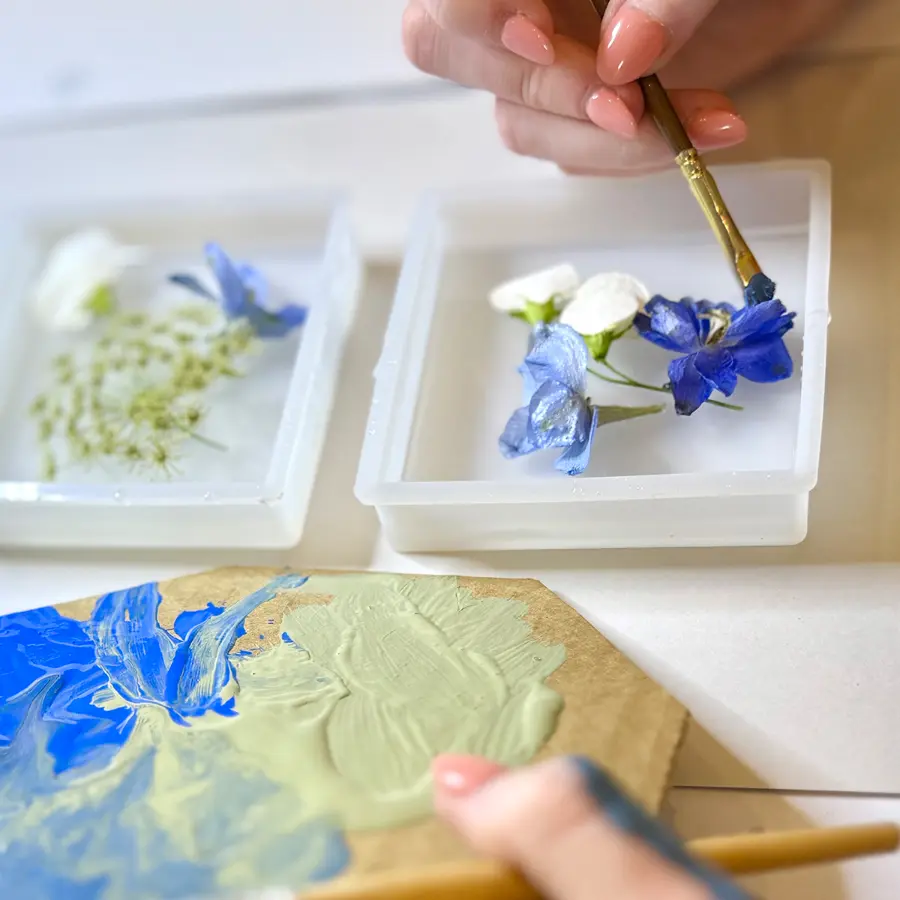
We utilize several different painting processes, depending on the needs of a particular flower variety, all of which we have researched and developed through trial and error over our 30 year tenure in the industry. Depending on the individual needs of each flower variety and the tone and color of the bloom when fresh, we drench some blooms or petals in paint, dry brush others, utilize acrylics or oils, dissect flowers prior to painting and then reassemble them, use fine mist sprays, watercolor, direct brush air brush our blooms.
Because we know from the past three decades of experience that the colors of flowers can change sometimes very significantly even during the dehydration process, and even from the time of the wedding until the time that the bouquet or arrangement arrives at our facility, we require each client to provide us with a photo of the flowers on the day of the event. This ensures that our flower artists can match the coloring of the preserved flowers within the keepsake to the flowers on their most beautiful day as closely as possible.
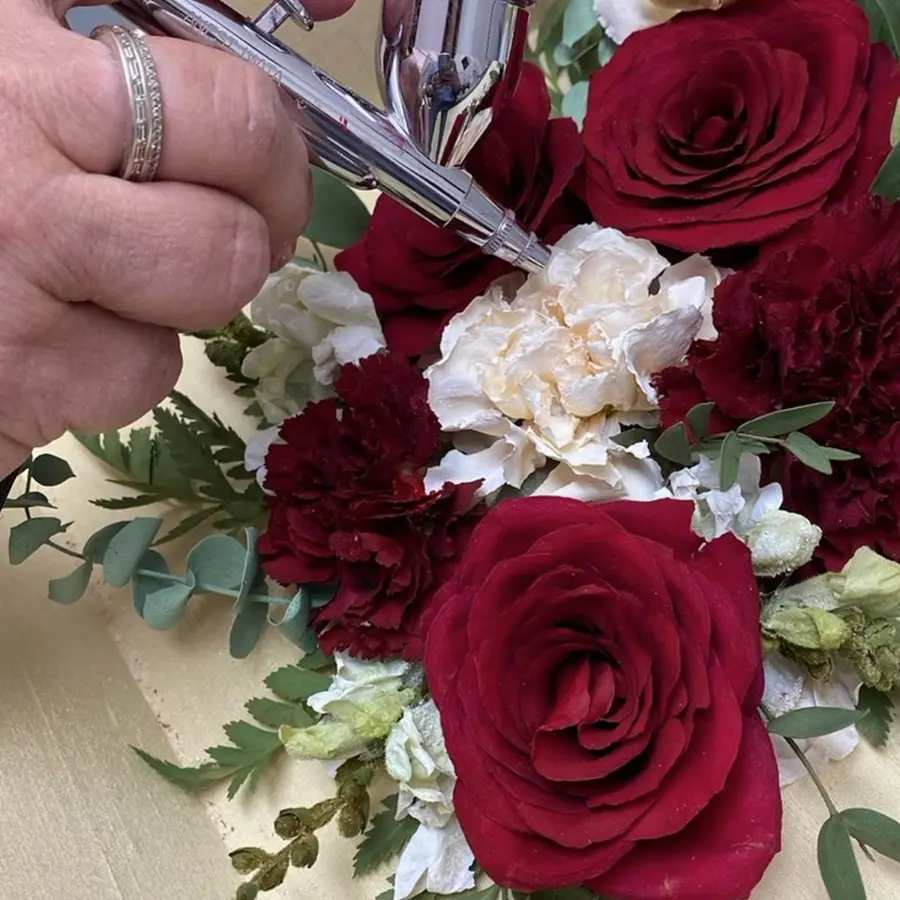
And while we’re talking color, let’s talk about “as closely as possible.” For some flowers, especially white flowers whose petals are porous post-dehydration, no matter how perfectly painted they are, the painted flower color will always appear much more ivory than its original white color. First, we do not use a super bright white paint or color tint because the white blooms turn so ivory that a bright white would need to be applied in such a thick coat that it would compromise the look and shape of the flower. When painting any flowers post preservation, the base color of the dehydrated flower will dictate what color hues can and will need to be applied to achieve a color as close as the combination of man made paints and colorants and mother nature made flower fibers allow. A knowledge of color theory and color blending and mixing is a necessity during this step of our process. And more often than not, more than one color or hue of paint is applied on each flower in order to blend colors to match the desired color or in order to create a visual depth or lightness to the color or tint as we match the hue, value and color of the flower when fresh.
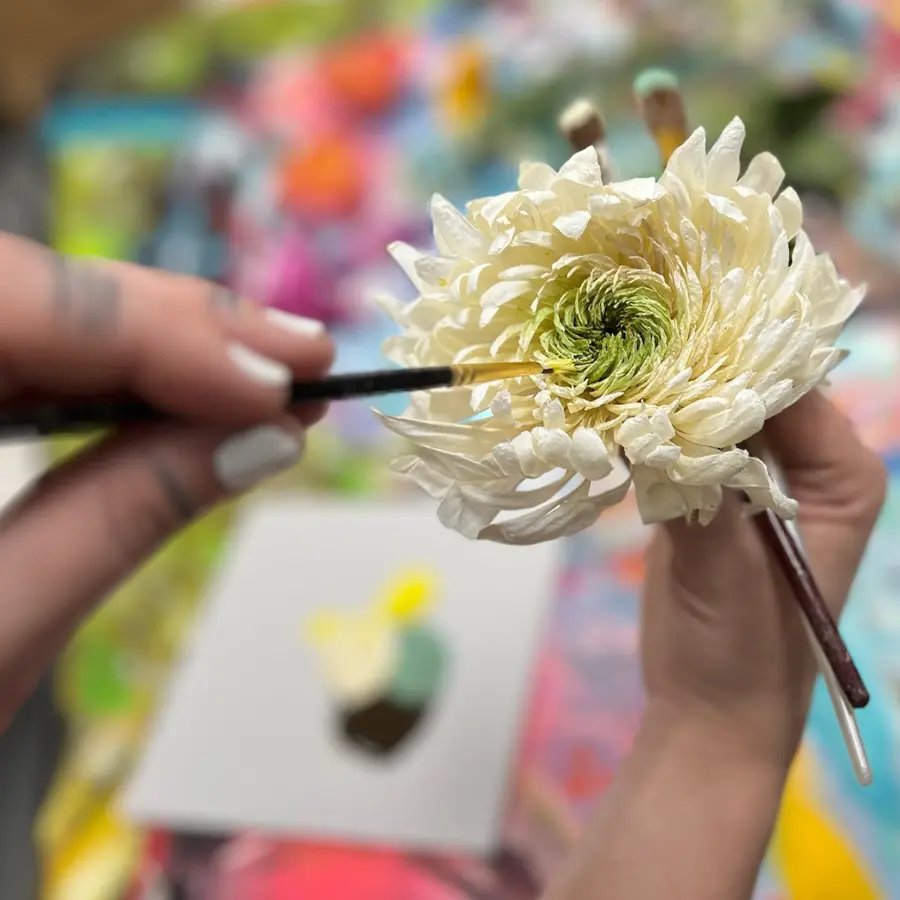
Hand-coloring flowers is a tedious and detailed process at Keepsake .. it requires a trained eye and confidence in our craft to create a realistic look to each and every bloom. Our artists utilize techniques learned in their formal art education and within their experience from years working with dehydrated flowers. Not all companies that preserve flowers do ALL of this. But Keepsake Floral does. And it shows .. in the beauty of depth, color richness, luminosity and nuance of the flowers within each and every keepsake .. from the smallest ornaments to our most grand and complicated resin keepsakes. No keepsake leaves without our signature coloring on the flowers within.
Keepsake Floral, Inc.
311 Circle Drive
Maitland, FL 32751
800-616-KEEP (5337)
Local: 407-898-5992
Fax: 407-898-8656
Our administrative office is open Monday-Thursday: 9am-3pm EST and Friday: 9am-Noon EST. The office is closed most major holidays.
Please call prior to dropping off or picking up floral arrangements.